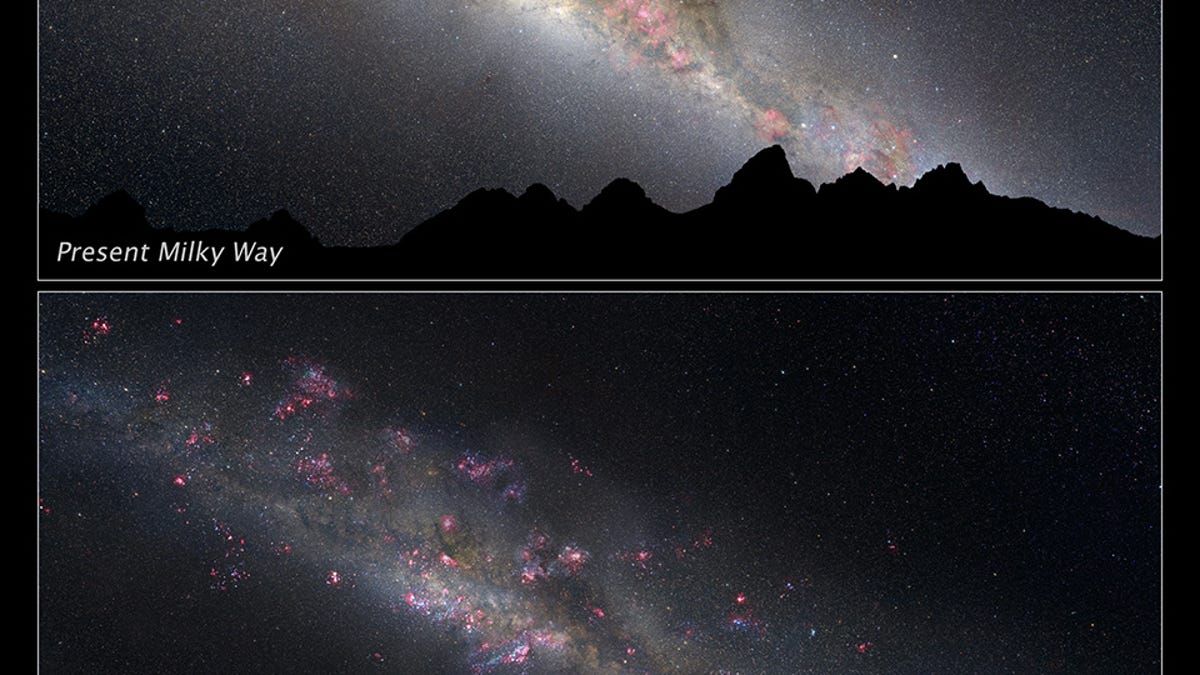Baby pictures! NASA offers first look at Milky Way in its infancy
Observations made with the Hubble Space Telescope show how our galaxy has grown over billions of years.

NASA on Thursday revealed the first imagery of what the Milky Way galaxy likely looked like when it was much younger.
Thanks to evidence gathered by the Hubble Space Telescope, NASA has been able to determine what our galaxy looked like billions of years ago. Though the space agency obviously wasn't able to take actual photographs of the Milky Way in its infancy, it intuited its conclusions based on Hubble's observations of 400 similar galaxies.
As NASA wrote in a post on the Hubble's Web site:
A scale model of the Milky Way can be imagined by envisioning a fried egg. The egg white is the disk, where the sun and Earth reside. The yoke represents the central bulge of older stars, home to a supermassive black hole that must have also grown along with the galaxy.
The Hubble images suggest that our galaxy's flat disk and central bulge grew simultaneously into the majestic spiral galaxy of today...The survey reveals that billions of years ago, the Milky Way was likely a faint, blue, low-mass object containing lots of gas, the fuel for star birth. The blue colors of the Milky Way ancestors are a signpost of rapid star formation. At the peak of star birth, when the universe was about 4 billion years old, the Milky Way-like galaxies were pumping out about 15 stars a year. By comparison, our galaxy today is creating only one star a year.
NASA said that in order to gather the information required to intuit the Milky Way's past, scientists utilized three large Hubble programs, the 3D-HST survey, the Cosmic Assembly Near-infrared Deep Extragalactic Legacy Survey (CANDELS), and the Great Observatories Origins Deep Survey (GOODS). The surveys leveraged both spectroscopy and visible and near-infrared imaging done by Hubble's Wide Field Camera 3, and its Advanced Camera for Surveys.
In its post, NASA quoted Yale University's Joel Leja, a member of the team that carried out the study, who reported that the surveys allowed the team to observe smaller galaxies rather than just the most luminous galaxies, as in the past. "Hubble gives us the shapes and colors of these spirals as well as their distances from Earth," Leja said in the post.

